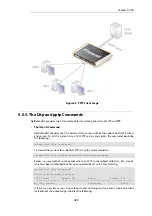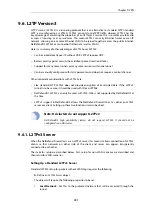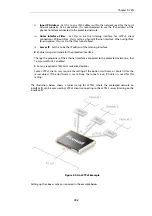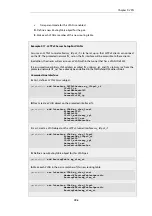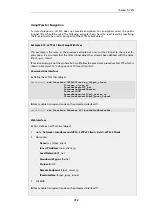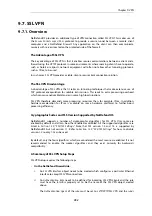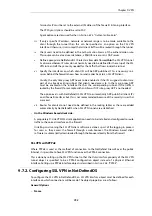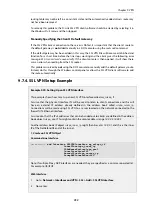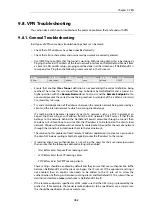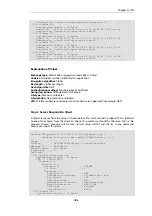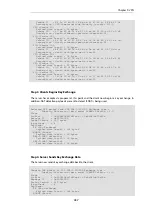
9.7. SSL VPN
9.7.1. Overview
NetDefendOS provides an additional type of VPN connection called
SSL VPN
. This makes use of
the
Secure Sockets Layer
(SSL) protocol to provide a secure tunnel between a remote client
computer and a NetDefend Firewall. Any application on the client can then communicate
securely with servers located on the protected side of the firewall.
The Advantage of SSL VPN
The key advantage of SSL VPN is that it enables secure communications between a client and a
firewall using the
HTTPS
protocol. In some environments where roaming clients have to operate,
such as hotels or airports, network equipment will often not allow other tunneling protocols,
such as IPsec, to be used.
In such cases, SSL VPN provides a viable, simple, secure client connection solution.
The SSL VPN Disadvantage
A disadvantage of SSL VPN is that it relies on tunneling techniques that make extensive use of
TCP protocol encapsulation for reliable transmission. This leads to extra processing overhead
which can cause noticeable latencies in some high load situations.
SSL VPN therefore demands more processing resources than, for example, IPsec. In addition,
hardware acceleration for IPsec is available on some hardware platforms to further boost
processing efficiency.
Cryptographic Suites and TLS Version Supported by NetDefendOS
NetDefendOS supports a number of cryptographic algorithms for SSL VPN. Only some are
enabled by default and all can be either enabled or disabled. All the supported algorithms are
listed in
Section 13.9, “SSL/TLS Settings”
. Note that TLS version 1.0 and 1.2 is supported by
NetDefendOS but not version 1.1. Refer to
Section 13.9, “SSL/TLS Settings”
for how to disable
version 1.2 so only 1.0 can be used.
By default, only the four algorithms which are considered the most secure are enabled. It is not
recommended to enable the weaker algorithms and they exist primarily for backwards
compatibility.
A Summary of SSL VPN Setup Steps
SSL VPN setup requires the following steps:
•
On the NetDefend Firewall side:
i.
An
SSL VPN Interface
object needs to be created which configures a particular Ethernet
interface to accept SSL VPN connections.
ii.
An
Authentication Rule
needs to be defined for incoming SSL VPN clients and the rule
must have the
Interface
property set to be the name of the SSL VPN object created
above.
The
Authentication Agent
of the rule must be set to
L2TP/PPTP/SSL VPN
and the rule's
Chapter 9: VPN
752
Summary of Contents for NetDefendOS
Page 30: ...Figure 1 3 Packet Flow Schematic Part III Chapter 1 NetDefendOS Overview 30 ...
Page 32: ...Chapter 1 NetDefendOS Overview 32 ...
Page 144: ...Chapter 2 Management and Maintenance 144 ...
Page 284: ...Chapter 3 Fundamentals 284 ...
Page 392: ...Chapter 4 Routing 392 ...
Page 419: ... Host 2001 DB8 1 MAC 00 90 12 13 14 15 5 Click OK Chapter 5 DHCP Services 419 ...
Page 420: ...Chapter 5 DHCP Services 420 ...
Page 573: ...Chapter 6 Security Mechanisms 573 ...
Page 607: ...Chapter 7 Address Translation 607 ...
Page 666: ...Chapter 8 User Authentication 666 ...
Page 775: ...Chapter 9 VPN 775 ...
Page 819: ...Chapter 10 Traffic Management 819 ...
Page 842: ...Chapter 11 High Availability 842 ...
Page 866: ...Default Enabled Chapter 13 Advanced Settings 866 ...
Page 879: ...Chapter 13 Advanced Settings 879 ...


